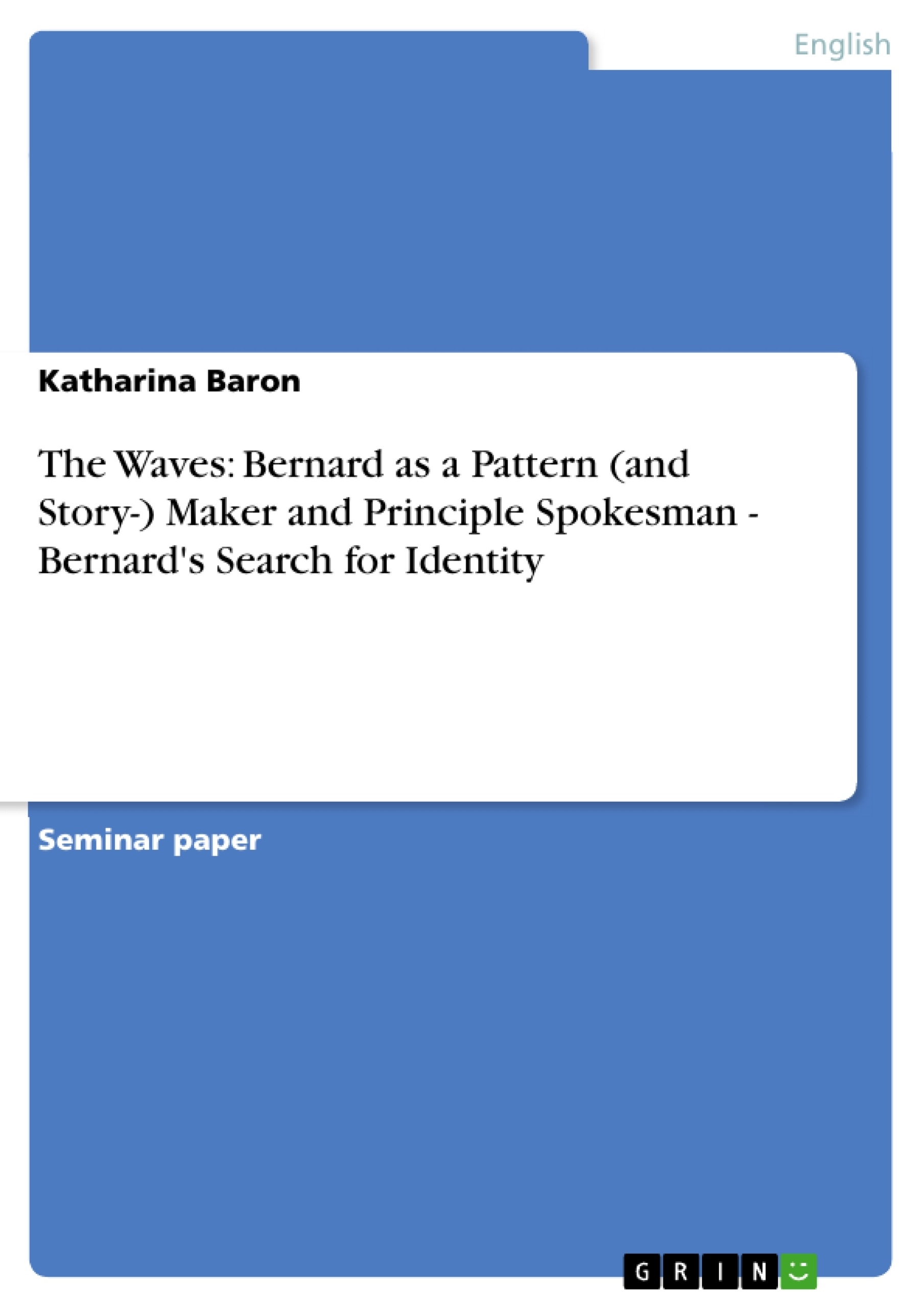The experimental novel The Waves by Virginia Woolf was published in 1931. By describing the search for identity Woolf has the aim to show that identity consists of a variety of selves. For that reason the question “Who am I“ is central to all characters in the novel.
Woolf introduces a circle of friends that consists of seven people and describes the lives of the characters from childhood until they are old. Six characters, three men and three women, get voices and express themselves. The seventh, a man called Percival, does not speak, he is introduced by the other characters Susann, Jinny, Rhoda, Neville, Louis, and Bernard. The friends present themselves through their monologues, but they do not talk to each other, they just tell their own thoughts. The reader moves from consciousness to consciousness and only by the inquit formula “said [name of character]“, one can recognize who is speaking. Stylistic similarities of the monologues hint that Virginia Woolf actually intended to present the consciousness of a single person and not of six different individuals. Therefore this stylistic feature serves to illustrate the concept of a multiple self.
The focus of this essay will be on Bernard because he is “[…] the primary voice in the novel“. His search for identity will be shown and it will be illustrated how Virginia Woolf’s uses this character to illustrate the concept of an identity that consists of various elements. At the beginning Bernard’s key position in the novel will be considered. Then some aspects of Bernard’s search for identity will be discussed and at the end Bernard’s function for the unity of the novel and of identity will be shown.
Table of Contents
- Introduction
- Bernard's Key Position in the Novel
- Bernard and the Question of Identity
- Bernard at College
- Androgyny and Identity
- Time and Identity
- Bernard and the Audience - Narrative and Identity
- The Epilogue
- Bernard - The Framing and Unifying Character
- Conclusion
Objectives and Key Themes
This essay examines the character of Bernard in Virginia Woolf's experimental novel The Waves, focusing on his search for identity within the context of a narrative structure that explores the complexities of selfhood. The essay aims to analyze Bernard's unique position within the novel, exploring his role as a primary voice and a unifying character. It investigates how Bernard's search for identity is shaped by his interactions with the other characters, his perceptions of the world, and his evolving sense of self.
- The search for identity in a multi-faceted self
- The influence of language and narrative on identity
- The role of perception and experience in shaping selfhood
- The concept of androgyny and its relationship to identity
- The exploration of time and its impact on the development of identity
Chapter Summaries
The introduction establishes the context for the essay, introducing The Waves as an experimental novel that explores the multifaceted nature of identity. It highlights Bernard's central role in the narrative as the primary voice and a character whose search for identity is a key theme throughout the novel.
The second chapter focuses on Bernard's key position within the novel, highlighting his linguistic abilities and his role as a commentator and interpreter of the events and thoughts of the other characters. The chapter also explores Bernard's duality as both a character whose consciousness is portrayed and as a writer who represents the other characters.
The third chapter delves into Bernard's search for identity, analyzing his efforts to define his self by defining what is "other." This chapter examines Bernard's experiences during his time at college, where he grapples with the complexities of his own identity and attempts to understand his relationship to others.
Keywords
The main keywords and focus topics of this essay include: The Waves, Virginia Woolf, Bernard, identity, selfhood, narrative, language, androgyny, time, perception, consciousness, multiple self, experimental novel.
- Citar trabajo
- Katharina Baron (Autor), 2006, The Waves: Bernard as a Pattern (and Story-) Maker and Principle Spokesman - Bernard's Search for Identity, Múnich, GRIN Verlag, https://www.grin.com/document/63138



